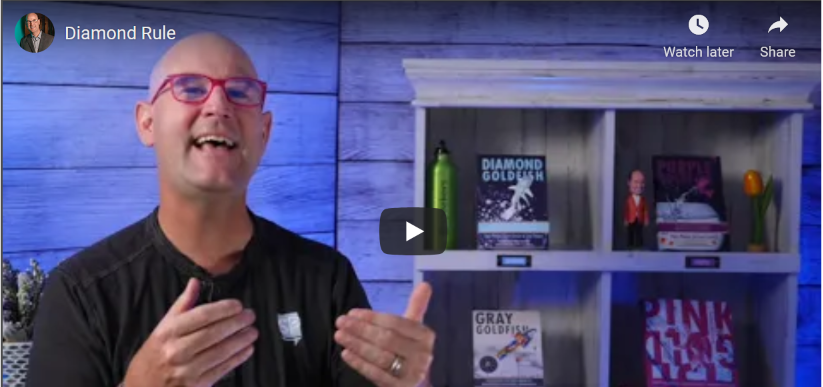The Diamond Rule is the 4.0 version of business. This video explores the rule and the 1.0, 2.0, and the 3.0 versions for background.
Version 1.0 is The Silver Rule
The Silver Rule is “do no harm.” As stated by Zigong, a disciple of Confucius, “What I do not wish others to do unto me, I also wish not to do unto others.”
The problem with Silver is that it’s not prescriptive. It doesn’t tell you how to treat others. It merely shares what not to do.
Version 2.0 is The Golden Rule
Throughout nearly every culture and religion, the Golden Rule has become [no pun intended] the gold standard of human dynamics.
The Golden Rule is simply “treating others the way you would like to be treated.”
Unfortunately, in sales and managing relationships, the Golden Rule is a bad rule. Because not everyone is like you.
Version 3.0 is The Platinum Rule
It simply is “treating others the way that they want to be treated.”
Grounded in emotional intelligence, the Platinum Rule asks you to accommodate the feelings of others.
The Platinum Rule is more outward-facing in its approach.
The focus shifts from “this is what I want, so I’ll give everyone the same thing” to “let me first understand what they want . . . and then I’ll give it to them.”
One of the challenges when completely focusing on the other person is that we can overlook how we’re feeling and reacting to a situation.
Version 4.0 is The Diamond Rule
The Diamond Rule takes the Platinum Rule to the next level.
Treating someone the way they want to be treated is tricky enough under normal circumstances—but what happens when things start to get heated?
In the immortal words of former boxing heavyweight champion Mike Tyson, “Everyone has a plan until they get punched in the mouth.”
Pressure can trigger a biological response that causes us to act in an unpredictable and irrational manner.
The Diamond Rule combines elements of both Gold and Platinum.
Said simply, the Diamond Rule is “the art of managing yourself under pressure and addressing the needs of others to avoid their triggers.”
Practicing the Diamond Rule requires two elements:
1. You have to see your own predictable behavioral style when pressure hits, and
2. You need the capability to assess prospects/clients relative to four different, predictable behavioral styles based primarily on how people respond biologically to pressure.
As a combination of the Golden Rule and the Platinum Rule, it requires you to consider and satisfy your own instinctive concerns and needs while simultaneously addressing the needs of others.
When you adhere to the Diamond Rule, you rise above the pressure.
This makes you stand out as unique and better in the eyes of your client, dramatically increasing your ability to be more effective and win more business.
Follow me on Twitter or LinkedIn.

Stan Phelps walks the walk. He stands out in the sea of sameness by modeling his own Differentiated Experience (DX) message: Differentiation isn’t just about what you say, it’s about what you do and, more importantly, how and why you do it. Stan leverages his unique collection of 5,000+ case studies on customer, employee, and brand experience to engage audiences with informative learning-based experiences. He believes purposeful DX wins the hearts of employees and customers, and differentiation ultimately boosts loyalty, retention, referrals, and results.
Find Stan’s in-person and virtual keynotes, workshops, and Goldfish tank programs at StanPhelps.com.

